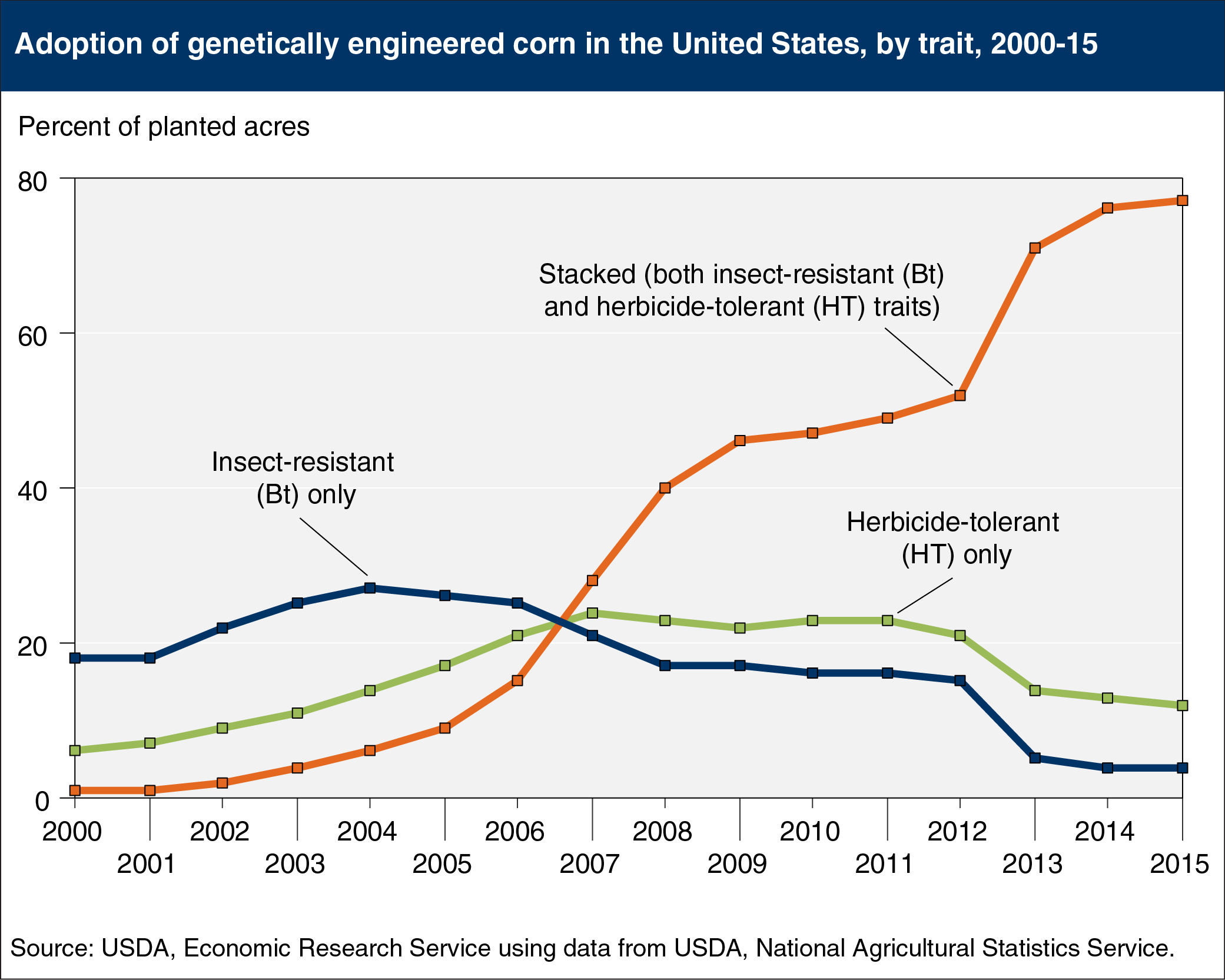Stacked GE varieties of corn have become commonplace
- by Economic Research Service
- 8/18/2015

U.S. farmers have embraced genetically engineered (GE) seeds in the 20 years since their commercial introduction. Herbicide-tolerant (HT) crops, developed to survive application of specific herbicides that previously would have destroyed the crop along with the targeted weeds, provide farmers with a broader variety of options for effective weed control. Insect-resistant crops contain a gene from the soil bacterium Bacillus thuringiensis (Bt) that produces a protein that is toxic to specific insects, protecting the plant over its entire life. Seeds that have both herbicide-tolerant and insect-resistant traits are referred to as “stacked.” Based on USDA survey data, adoption of stacked GE corn varieties has increased sharply, reaching 77 percent of planted corn acres in 2015. Conversely, use of Bt-only corn dropped from 27 percent of planted corn acreage in 2004 to 4 percent in 2015, while HT-only corn dropped from 24 percent of planted corn acreage in 2007 to 12 percent in 2015. Generally, stacked seeds (seeds with more than one GE trait) tend to have higher yields than conventional seeds or seeds with only one GE trait. This chart is based on the ERS data product, Adoption of Genetically Engineered Crops in the U.S., updated July 2015.
We’d welcome your feedback!
Would you be willing to answer a few quick questions about your experience?

